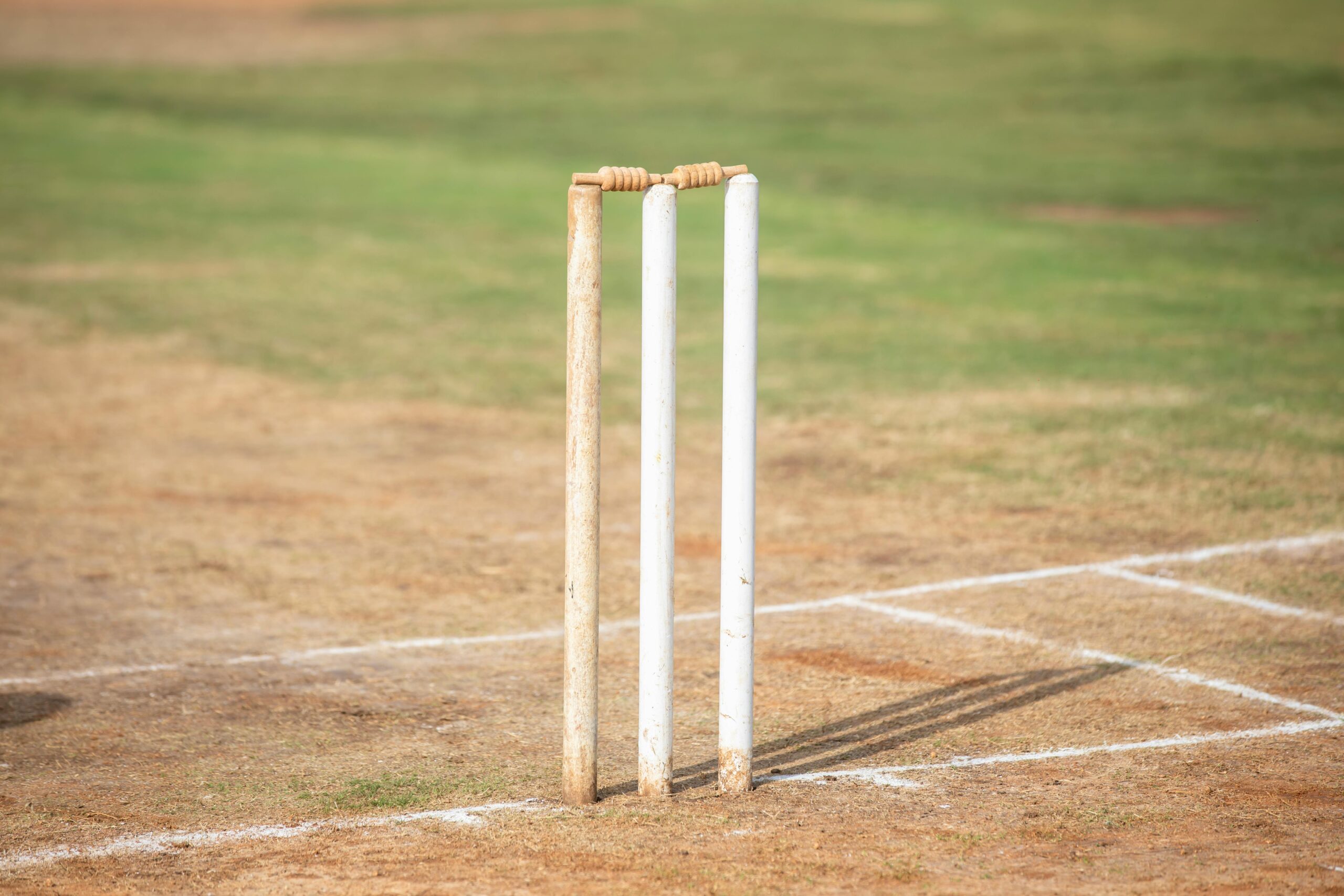Cricket is a sport rich in history and tradition, with its unique rules and terminology that can sometimes be confusing. One such fundamental term is “stumps.” Whether you’re a seasoned cricket fan or a newbie to the game, understanding the role of stumps in cricket is crucial. In this blog, we’ll explore the stumps meaning in cricket, why they hold such importance in every game, and how they shape the outcome of every match.
What Are Stumps in Cricket?
Stumps are an essential part of a cricket field setup. They consist of three vertical posts that stand upright at each end of the pitch, forming part of the wicket. The two sets of stumps are positioned 22 yards apart, and they play a pivotal role in determining whether a batsman is out or safe during the game. But these simple wooden posts carry much more weight in the game than meets the eye.
In the early stages of cricket, the wickets used to be much larger and more irregular in shape. However, as the game evolved, stumps became standardized to enhance consistency across matches. Today, the stumps are typically made from wood, although some innovations have introduced LED stumps that light up when struck.
Stumps Meaning in Cricket: More Than Just Wooden Poles
When we talk about the stumps meaning in cricket, we’re not just referring to physical wooden posts. Stumps serve as a critical part of the game’s outcome, determining outs, boundaries, and even the conclusion of innings.
Stumps are part of what makes a wicket, which includes two bails resting on top of the three vertical stumps. The arrangement of the stumps and bails together defines the wicket. A bowler aims to knock the stumps over to get a batsman out, while the batsman’s primary objective is to defend them with the bat.
Get your Cricket Toss Coin now From The Dressing Room.
Let’s dive deeper into their significance:
Why Are Stumps Important in Cricket?
Stumps are important for several reasons, primarily because they are used to determine several forms of dismissals in cricket. Their presence influences the flow of the game and can turn the tide in a match.
1. Bowled Out
One of the most thrilling ways to get a batsman out is by “bowling” them. A bowler delivers the ball with the goal of knocking the stumps over. If the ball hits the stumps and at least one bail is dislodged, the batsman is deemed “bowled out.” This is a definitive and celebrated dismissal because it showcases the bowler’s skill in accuracy and strategy.
2. Run Out
Stumps are critical in run-out situations. If a fielder throws the ball and it hits the stumps before the batsman reaches the crease, the batsman is run out. This emphasizes how much stumps can impact the intensity of a game, especially during tight run chases or when quick singles are attempted.
Try the Free Net Run Rate Calculator today
3. Stumped by the Wicketkeeper
A wicketkeeper can stump a batsman who leaves the crease to play a delivery. If the batsman misses the ball and the wicketkeeper quickly removes the bails by hitting the stumps before the batsman returns, the batsman is stumped. This adds an element of agility and quick decision-making to the game, making stumps central to wicketkeepers’ defensive role.
4. Decision-Making in LBW
While stumps’ meaning in cricket doesn’t directly relate to Leg Before Wicket (LBW) dismissals, they still play a part in the decision-making process. In cases of LBW, the umpire judges whether the ball would have hit the stumps had the batsman not blocked it with their leg. So, indirectly, the position of the stumps is crucial in LBW appeals.
The Evolution of Stumps: From Wooden Posts to LED Wonders
As cricket advanced into the modern age, technology found its way into every aspect of the sport, including stumps. The traditional wooden stumps have been joined by LED stumps, a new feature that makes the game more visually exciting and easier to officiate.
LED Stumps
LED stumps were introduced in international cricket to provide a more precise understanding of dismissals. These stumps light up the moment the bails are dislodged, offering an instant indication that the batsman is out. It helps umpires make faster, more accurate decisions, especially in run-outs or close calls where the bails might not be visibly disturbed.
LED stumps have been a game-changer in high-profile tournaments like the ICC World Cup and IPL, adding an extra layer of thrill for fans.
Stumps and the End of an Innings
In cricket, stumps signify more than just outs; they also mark the end of play. The phrase “stumps” is used metaphorically in cricket to announce the conclusion of a day’s play in Test cricket. When the umpires call “stumps,” it indicates that no more play will take place for that day, whether due to time constraints or bad light.
Also Read : Cricket Rules and Regulations Every Cricket Player Should Know
Symbolism of Stumps: Tradition and Identity
Beyond the technical aspects of stumps in cricket, they carry a lot of symbolic value too. The sight of stumps being knocked over in a clean bowled is iconic in the sport. It’s a moment of triumph for the bowler and a dramatic low for the batsman. For fans, the stumps symbolize the balance between attack and defense, as well as the fine margins that define victory and defeat in cricket.
Stumps have also become a souvenir of sorts. When a match ends, especially in big tournaments, players often collect the stumps as memorabilia, representing the battle they fought on the field.
Fun Facts About Stumps in Cricket
- Do They Break Often? Despite the stumps being made of wood, they rarely break during a game. However, there have been instances where fast bowlers have hit the stumps with such force that they’ve shattered! These moments make for unforgettable cricket highlights.
- Why Are There Three Stumps? Initially, cricket used only two stumps with a single bail. In the late 18th century, a third stump was added to increase the challenge for batsmen and make the bowler’s job easier. This change was seen as crucial for balancing the contest between bat and ball.
- What’s with the Height? The height and width of stumps are standardized. They stand at 28 inches tall, and the total width of all three stumps combined is 9 inches. This ensures consistency in gameplay across all matches, from international tournaments to local games.
Conclusion
The humble stumps may appear simple, but their role in cricket is anything but ordinary. They are crucial to dismissals, decision-making, and the overall flow of the game. Whether you’re learning about stumps’ meaning in cricket or watching a live match, it’s clear that these three wooden posts hold immense significance on the cricket field.
From the dramatic bowled outs to the thrilling run-out decisions, stumps have seen some of the most exciting moments in cricket history. The next time you watch a match, pay extra attention to these unsung heroes of the cricket pitch, and you’ll appreciate the game even more.
FAQs
- What are stumps made of in cricket?
Stumps are traditionally made of wood, usually from ash trees, though modern innovations like LED stumps use both wood and electronic components. - How tall are stumps in cricket?
Stumps are 28 inches tall, and the total width of all three stumps is 9 inches. - What is a bowled out?
A bowled out occurs when the bowler delivers the ball, and it hits the stumps, dislodging the bails, causing the batsman to be dismissed. - How do LED stumps work?
LED stumps light up when the bails are dislodged, providing a clear visual indication that the batsman is out. - What is the importance of stumps in cricket?
Stumps play a crucial role in determining dismissals like bowled outs, run-outs, and stumpings, making them essential for the outcome of the game.











